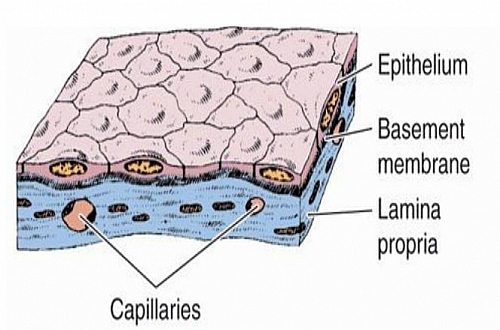Simple Squamous Cells: Structure & Function Explained

Simple squamous cells are one of the most fundamental yet fascinating components of our body’s tissue structure. These thin, flat cells play a crucial role in various physiological processes, from gas exchange in the lungs to filtration in the kidneys. Understanding their structure and function not only sheds light on basic biology but also highlights their importance in maintaining overall health. Whether you’re a student, a healthcare professional, or simply curious about how your body works, this guide will walk you through everything you need to know about simple squamous cells.
What Are Simple Squamous Cells?

Simple squamous cells are a type of epithelial cell characterized by their flat, scale-like shape. They form a single layer of tissue, allowing for efficient exchange of substances across membranes. These cells are found in various parts of the body, including the alveoli of the lungs, capillaries, and glomeruli in the kidneys. Their simplicity in structure is matched by their critical functions in maintaining homeostasis.
Key Characteristics of Simple Squamous Cells
- Shape: Flat and thin, resembling a plate or scale.
- Nucleus: Located in the center of the cell, appearing as a small, round structure.
- Layer: Arranged in a single layer, allowing for rapid diffusion of molecules.
📌 Note: Simple squamous cells are often described as "pavement cells" due to their flat, tile-like appearance.
Structure of Simple Squamous Cells

The structure of simple squamous cells is optimized for their primary functions. Their thinness (approximately 7.5 μm in diameter) minimizes the distance molecules must travel, facilitating quick exchange processes. The cells are tightly packed, forming a continuous sheet that prevents leakage of substances.
Components of Simple Squamous Cells
- Cell Membrane: Thin and permeable, allowing for easy passage of small molecules.
- Cytoplasm: Minimal, as the cell’s primary role is not metabolic but facilitative.
- Tight Junctions: Ensure cells adhere firmly to one another, creating a selective barrier.
Functions of Simple Squamous Cells

Simple squamous cells are essential for processes that require rapid exchange or filtration of substances. Below are their primary functions:
1. Gas Exchange in the Lungs
In the alveoli, simple squamous cells allow oxygen and carbon dioxide to pass between the air sacs and bloodstream efficiently.
2. Filtration in the Kidneys
In the glomeruli, these cells form a selective barrier that filters waste products from the blood while retaining essential molecules like proteins.
3. Diffusion in Capillaries
In capillary walls, simple squamous cells enable the exchange of oxygen, nutrients, and waste products between the blood and surrounding tissues.
📌 Note: The efficiency of simple squamous cells in diffusion is due to their minimal thickness and large surface area.
Where Are Simple Squamous Cells Found?

Simple squamous cells are strategically located in areas where rapid exchange or filtration is necessary. Key locations include:
- Alveoli in the lungs.
- Glomeruli in the kidneys.
- Capillaries throughout the body.
- Serous membranes (e.g., pleura, pericardium).
Importance in Health and Disease

Damage to simple squamous cells can lead to serious health issues. For example, pneumonia can impair alveolar function, while glomerulonephritis affects kidney filtration. Understanding these cells helps in diagnosing and treating such conditions.
Checklist: Key Points About Simple Squamous Cells
- Structure: Flat, thin cells in a single layer.
- Functions: Facilitate diffusion, filtration, and secretion.
- Locations: Lungs, kidneys, capillaries, serous membranes.
- Health Impact: Essential for gas exchange, filtration, and overall homeostasis.
What is the primary function of simple squamous cells?
+Simple squamous cells primarily facilitate rapid diffusion and filtration of molecules, such as gas exchange in the lungs and waste filtration in the kidneys.
Where are simple squamous cells found in the body?
+They are found in the alveoli of the lungs, glomeruli of the kidneys, capillaries, and serous membranes like the pleura and pericardium.
Why are simple squamous cells so thin?
+Their thinness minimizes the distance molecules must travel, allowing for efficient exchange of substances across membranes.
Simple squamous cells, despite their simplicity, are vital to several life-sustaining processes. From enabling us to breathe to ensuring our kidneys filter waste effectively, these cells are the unsung heroes of our body’s daily operations. By understanding their structure and function, we gain deeper insights into how our bodies maintain balance and health. Whether you’re studying biology or simply curious about how your body works, appreciating the role of simple squamous cells highlights the elegance of biological design.
Related Keywords: simple squamous cells function, simple squamous cells structure, alveolar cells, glomerulus function, epithelial cells, diffusion in biology.


